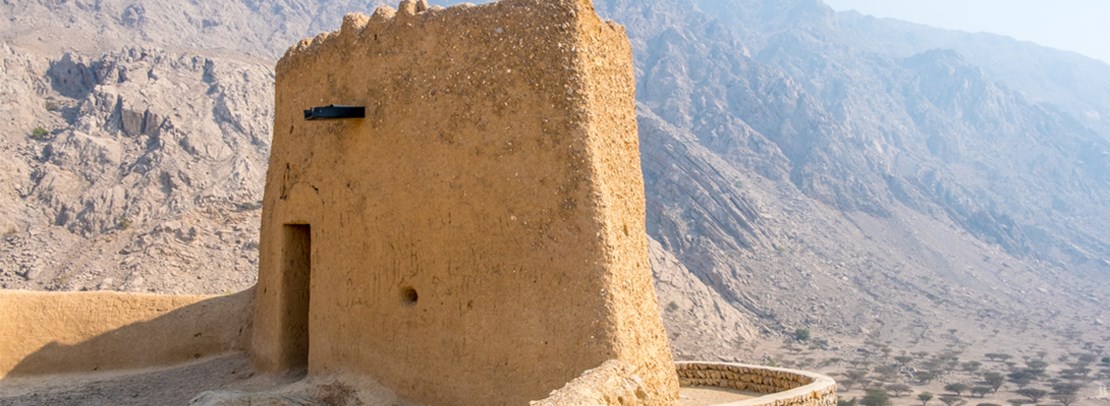There is evidence of civilization in Ras Al Khaimah some 7,000 years ago, making it one of the longest-settled places on the planet. Around 1,000 separate archaeological sites and antiquities are scattered around the Emirate, testament to its ancient origins. These include Sheba’s Palace (reputed to be the oldest castle in the UAE), the Umm Al Nar tombs (which date back to the Bronze Age) and the Wadi Suq burial sites at Shimal and Seih Al Harf (which date from the period 2000-1600 BC). Its strategic location lent itself to the establishment of commerce with other regions, and evidence exists of trading links with Mesopotamia between 5500 and 3800 BC.
The Hafit (3200-2600 BC), Umm Al Nar (2600-2000 BC) and Wadi Suq (2000-1600 BC) periods have furnished archaeologists with many remnants from these periods, while numerous tombs and grave sites have been excavated and their contents placed on display in the Ras Al Khaimah National Museum. Late Bronze Age and Iron Age settlements have been discovered near Shimal, Dhayah and in Khatt, respectively, while archaeological evidence of the early and later Islamic periods is more plentiful in Ras Al Khaimah than in any of the other emirates.

The Abbasid era marked the unification of the Islamic Empire and the expansion of trading links with East Asia.
Julfar (as Ras Al Khaimah was then known) was famed as a key commercial center in the Arabian Gulf and pottery from Julfar has been found at archaeological sites across the Gulf, indicating extensive trade during this period.
This resulted in what is now Ras Al Khaimah becoming known for its rich seafaring heritage, and it was the birthplace of the famed Arab navigator Ahmad Ibn Majid (‘The Lion of the Seas’).
As a result of the siltation of the natural harbour, the commercial and administrative center of Julfar shifted, away from the north-eastern creek. It moved to the southwestern lagoon that is today the modern creek of Ras Al Khaimah.
First mentioned at the beginning of the 16th century, Ras Al Khaimah developed into a town and became the new center of Julfar by the end of the 16th century.
It was around this time that the Qawasim rose to become the major power in the Gulf. The Qawasim tribe created one of the strongest fleets ever seen in the region and presided over lands on both sides of the Strait of Hormuz. A treaty signed in 1820 in Ras Al Khaimah by the Qawasim, other tribe rulers and the British brought stability to the seas by establishing the region as a British protectorate; the Perpetual Maritime Truce further cemented this in 1853. Known as the Trucial States, the signatories formed what was the precursor to the UAE, which was formally created on independence from Britain on December 2, 1971 (Ras Al Khaimah joined in early 1972).
For more info, visit: www.rakheritage.rak.ae


 Heart Of RAK
Heart Of RAK